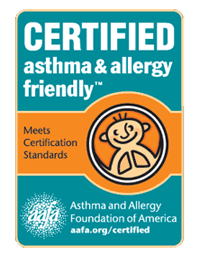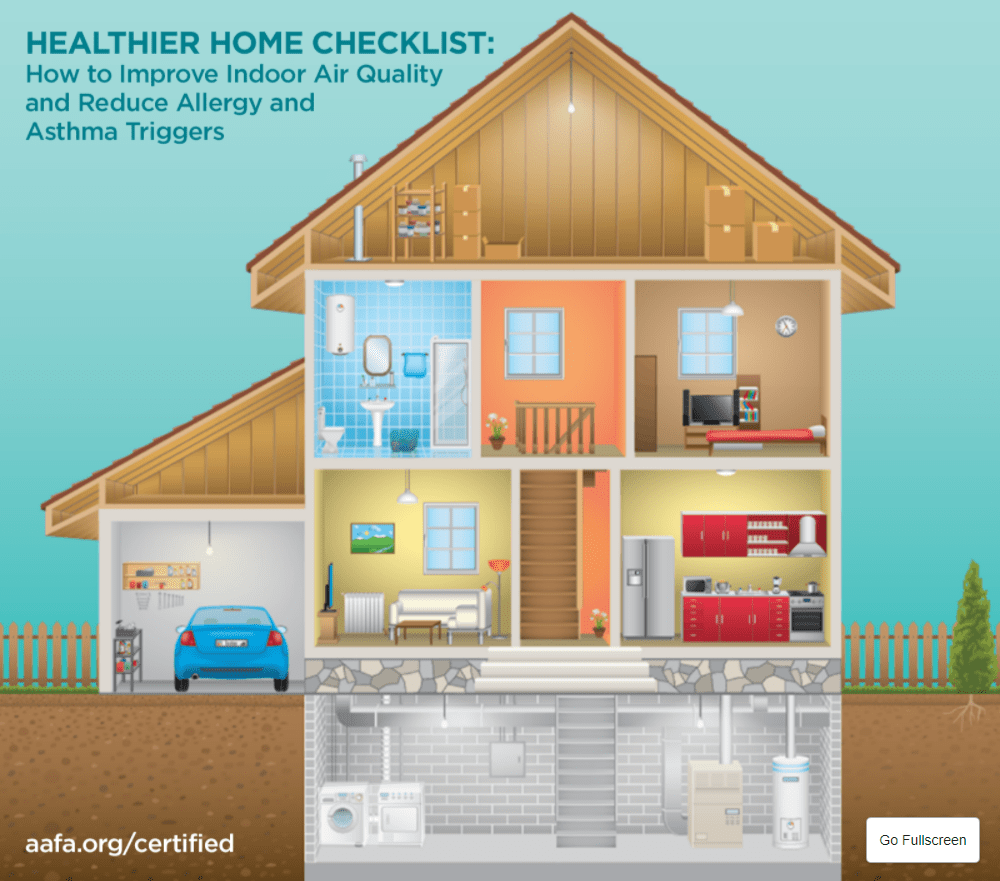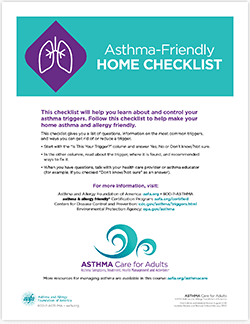A healthy living space begins with good indoor air quality (IAQ). Allergens, scents, chemicals, volatile organic compounds (VOCs), and outdoor air pollution can affect the IAQ in your home.
Good IAQ is an important part of asthma and allergy management. But asthma triggers and allergens can hide all over our homes. So where do you begin when it comes to making your home healthier?
Some asthma and allergy triggers are easy to spot – such as dust that can contain pollen and dust mite allergens, and mold. But there are other potential asthma triggers in your indoor air. You can improve your indoor air quality by reducing the sources of allergens and asthma irritants throughout your home.
The Asthma and Allergy Foundation of America (AAFA) has a Healthier Home Checklist to help you learn ways to improve your IAQ and reduce asthma and allergy triggers in your home. On our Healthier Home webpage, mouse over (or click if you’re on mobile) rooms of the house for tips for each area of your home. The tips point out some of the top asthma and allergy triggers you’ll find in each room or area.
You’ll find tips to improve IAQ in your:
- Living room
- Kitchen
- Bedrooms
- Bathrooms
- Attic/roof
- Basement
- Garage
- Laundry
You can also download and print our free Asthma-Friendly Home Checklist. You can go through the checklist to improve IAQ. It will help you learn about and control your asthma triggers. If you rent, you can share it with your property owner or landlord after identifying potential issues.
Now that you know about our Healthier Home Checklist, you may be wondering what room to start in. We recommend starting with your bedrooms. Bedrooms tend to have the highest number of allergens and the worse IAQ of any room of your home. Since we spend one-third of our lives in our bedrooms, that’s the best place to start improving your home’s health.

Visit aafa.org/certified to search for CERTIFIED products. There you can also learn more about the asthma & allergy friendly® Certification Program.







Comments (0)